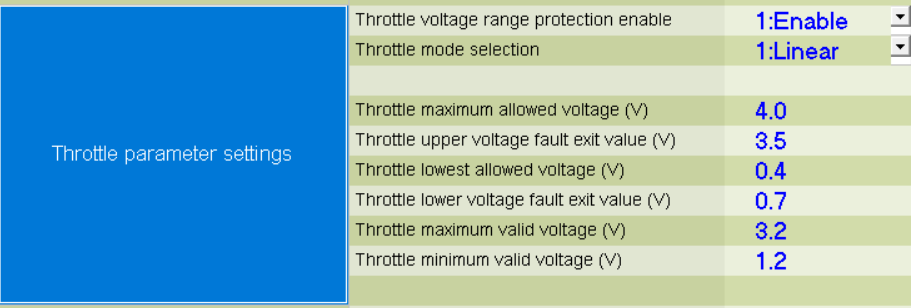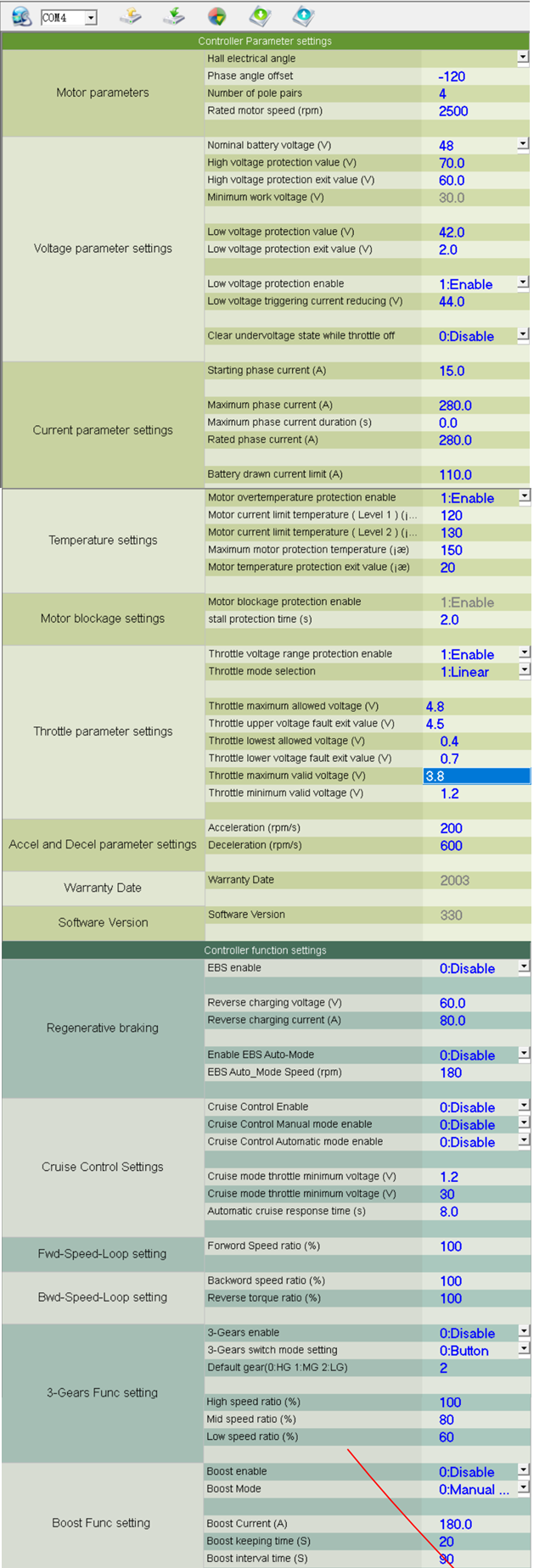71
General Discussions / Re: VEC300 with 5kW motor
« Last post by Corchard on April 27, 2025, 02:51:29 PM »Thank you for the quick response and thank you for the reminder on the upload tool tools' idiosyncrasies.
I've got that one figured out:
I'll try with the settings you suggested.
As as safety feature I've purchased potentiometer with a Detent at zero. Here is the bench test profile:
Digikey potentiometer bench results:
Any Way to make this work?
I really appreciate you taking the time to help us all out.
I've got that one figured out:
- connect to controller
- save parameters to controller
- power down controller
- wait 30 seconds and power powercontroller
- connect to controller and validate new values
I'll try with the settings you suggested.
As as safety feature I've purchased potentiometer with a Detent at zero. Here is the bench test profile:
Digikey potentiometer bench results:
| Position | Black–Red (O, V) | Black–Green (O, V) | Red–Green (O, V) |
| Idle (0%) | 0 O, 0.00 V | 10.00 kO, 0.00 V | 10.00 kO, 0.00 V |
| 25% | ~2.5 kO, 1.25 V | ~7.5 kO, 1.25 V | ~5.0 kO, 3.75 V |
| 50% | ~5.0 kO, 2.50 V | ~5.0 kO, 2.50 V | ~5.0 kO, 2.50 V |
| 75% | ~7.5 kO, 3.75 V | ~2.5 kO, 3.75 V | ~7.5 kO, 1.25 V |
| Full (100%) | 10.00 kO, 5.00 V | 0 O, 5.00 V | 10.00 kO, 0.00 V |
Any Way to make this work?
I really appreciate you taking the time to help us all out.


 Recent Posts
Recent Posts






